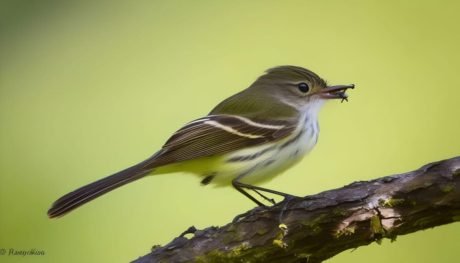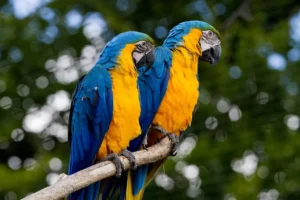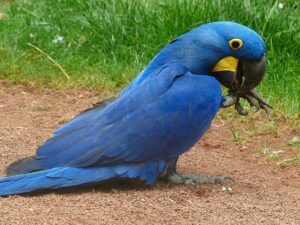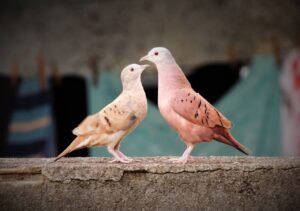Ranganathittu Bird Sanctuary: A Paradise for Birdwatchers and Visitors
Ranganathittu Bird Sanctuary is an amazing natural reserve where several species of birds and other animals can be observed, It is situated in the southern Indian state of Karnataka. Birdwatchers, wildlife lovers, and photographers from all over the world visit this sanctuary to take through its beauty, making it an established tourist destination. In this article, we will discuss the Ranganathittu Bird Sanctuary’s history, geographical location, plant and animal activities, and other important parts.
History of Ranganathittu Bird Sanctuary
Ranganathittu Bird Sanctuary was established in 1940 as a small conservation area on the banks of the Kaveri River. It was originally named as “Pakshi Kashi” (the abode of birds) by the local villagers. Later, the sanctuary was renamed as Ranganathittu Bird Sanctuary in honor of the Hindu God Ranganatha who is worshipped in a nearby temple.
The Ranganathittu Bird Sanctuary was declared a bird sanctuary in 1974 and was subsequently recognised as an Important Bird Area by the Birdlife International organisation. It was also declared as a Ramsar site in 2019 due to its ecological significance.
Video Credit: Rahul Aravind
Location of Ranganathittu Bird Sanctuary
Ranganathittu Bird Sanctuary is located in the Mandya district of Karnataka, approximately 130 km from Bangalore and 16 km from Mysore. It is situated on the banks of the Kaveri River, which is the lifeline of the region. The sanctuary is spread over an area of 67 acres and comprises of six islets and some submerged sandbanks.
Flora and Fauna of Ranganathittu Bird Sanctuary
Ranganathittu Bird Sanctuary is home to a different variety of flora and fauna (Animals and plants). The vegetation in the sanctuary has trees like Acacia, Eucalyptus, and Indian Coral, along with grasslands and reed beds.
The Sanctuary is primarily known for its avian population, with over 170 species of birds being recorded here. Some of the popular bird species that can be spotted in the sanctuary are Indian Shag, Little Cormorant, Great Stone Plover, River Tern, Egrets, Herons, and Painted Stork.
Apart from birds, this Sanctuary is also home to other wildlife species like Marsh Crocodiles, Indian Rock Pythons, and Common Otters. The sanctuary also has a rich fish population, which serves as a source of food for many birds and crocodiles.
Activities in Ranganathittu Bird Sanctuary
Ranganathittu Bird Sanctuary has different types of activities for visitors to explore the sanctuary and its inhabitants. Some of the popular activities that visitors can participate in are:
Bird Watching:
Birdwatching is the most popular activity in the Sanctuary. The best time to visit the sanctuary for bird watching is from November to June when the migratory birds arrive and the breeding season begins.
Boat Ride:
A boat ride along the Kaveri River is another popular activity in the sanctuary. The boat ride gives visitors a chance to get up close to the islets and spot various bird species and crocodiles.
Nature Walk:
Visitors can take a guided nature walk through the sanctuary to learn about the flora and fauna of the region.
Photography:
Ranganathittu Bird Sanctuary is a paradise for photography enthusiasts. Visitors can capture some stunning shots of birds, crocodiles, and other wildlife in their natural habitat.
Conservation Efforts at Ranganathittu Bird Sanctuary
Ranganathittu Bird Sanctuary is an important conservation area, and several efforts have been made to preserve the sanctuary and its inhabitants. Some of the efforts are:
- Habitat Restoration: The sanctuary authorities regularly undertake habitat restoration activities like clearing invasive plant species, planting native vegetation, and maintaining the water levels in the Kaveri River.
- Awareness Programs: The authorities conduct various awareness programs and workshops for the local communities and visitors to educate them about the importance of conservation and responsible tourism.
- Research and Monitoring: The sanctuary authorities conduct research and monitoring activities to understand the population dynamics of various bird species and other wildlife in the sanctuary. This helps them to make informed decisions about conservation efforts.
- Eco-friendly Practices: The sanctuary authorities have implemented various eco-friendly practices like solar-powered boats, rainwater harvesting, and waste management to reduce the impact of tourism on the sanctuary.

Visiting Ranganathittu Bird Sanctuary
Ranganathittu Bird Sanctuary is open throughout the year, but the best time to visit is from November to June when the migratory birds arrive and the breeding season begins. The sanctuary is open from 9 am to 6 pm, and the entry fee for Indian citizens is Rs. 50, while for foreigners, it is Rs. 300.
Visitors are advised to follow the rules and regulations of the sanctuary, which include maintaining silence, not feeding the birds or crocodiles, and not littering the sanctuary.
Accommodation options near Sanctuary include budget hotels and guesthouses in the nearby towns of Srirangapatna and Mysore. Visitors can also opt for homestays and resorts that offer a comfortable stay amidst nature.
Conclusion and Final Words:
Ranganathittu Bird Sanctuary is a beautiful nature reserve that is home to a wide variety of birds and other wildlife. It is a popular destination for birdwatchers, visitors, tourists, nature enthusiasts, and photographers who come from all over the world to observe the beauty of this sanctuary. With its rich flora and fauna, numerous activities, and conservation efforts, Ranganathittu Bird Sanctuary is a must-visit destination for anyone interested in exploring the natural wonders of India.
FAQ on Ranganathittu Bird Sanctuary:
-
What is Ranganathittu Bird Sanctuary?
Ranganathittu Bird Sanctuary is a protected area that is located near the town of Srirangapatna in Karnataka, India. It is home to different bird species, including migratory birds that come from as far as Siberia and Australia.
-
What is the best time to visit Ranganathittu Bird Sanctuary?
The best time to visit Ranganathittu Sanctuary is from November to June when the migratory birds arrive and the breeding season begins. During this time, visitors can able to see a large number of bird species and their breeding behaviour.
-
How much time does it take to explore Ranganathittu Sanctuary?
It takes around 2-3 hours to explore this Sanctuary, but it can vary depending on the number of birds and other wildlife sightings.
-
What are the popular bird species found in Ranganathittu Bird Sanctuary?
Some of the popular bird species found in this Sanctuary are painted storks, spot-billed pelicans, Asian openbill storks, great cormorants, little cormorants, egrets, herons, and kingfishers.
-
Is photography allowed in Ranganathittu Bird Sanctuary?
Yes, photography is allowed in Sanctuary, but visitors are advised to follow the rules and regulations of the sanctuary, which are not disturbing the birds or their habitat.
-
Are there any accommodations available near Ranganathittu Bird Sanctuary?
Yes, there are several accommodation options available near Sanctuary, such as budget hotels, guesthouses, homestays, and resorts in the nearby towns of Srirangapatna and Mysore.
-
How does Ranganathittu Bird Sanctuary contribute to conservation efforts?
Ranganathittu Bird Sanctuary contributes to conservation efforts by conducting various habitat restoration activities, awareness programs, research and monitoring, and implementing eco-friendly practices. These efforts help to maintain the natural habitat of the birds and other wildlife in the sanctuary.
Recommended:





























